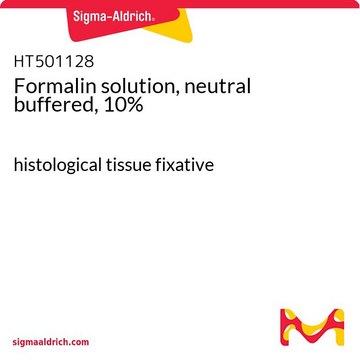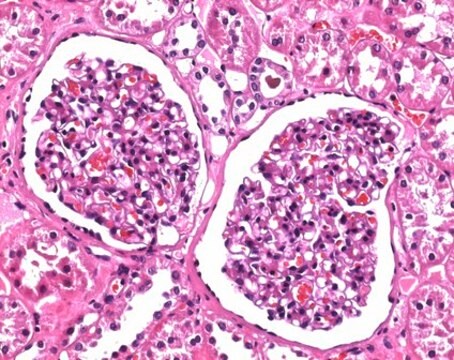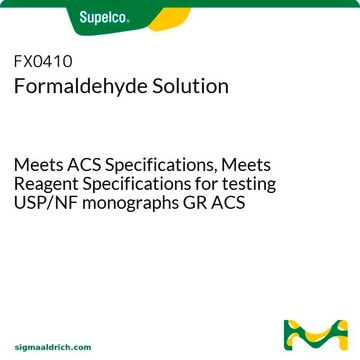F8775
Formaldehyde solution
for molecular biology, 36.5-38% in H2O
Synonym(s):
Formalin
About This Item
immunofluorescence: suitable
immunohistochemistry: suitable
genomic analysis
Recommended Products
grade
for molecular biology
Quality Level
vapor density
1.03 (vs air)
vapor pressure
52 mmHg ( 37 °C)
form
liquid
autoignition temp.
572 °F
contains
10-15% methanol
concentration
36.5-38% in H2O
technique(s)
ChIP: suitable
immunofluorescence: suitable
immunohistochemistry: suitable
density
1.09 g/mL at 25 °C (lit.)
suitability
suitable for (use in Formaldehyde-Agarose Gel Electrophoresis of RNA)
application(s)
general analytical
genomic analysis
storage temp.
15-25°C
SMILES string
[H]C([H])=O
InChI
1S/CH2O/c1-2/h1H2
InChI key
WSFSSNUMVMOOMR-UHFFFAOYSA-N
Looking for similar products? Visit Product Comparison Guide
General description
- Preservative: Formaldehyde′s ability to inhibit microbial growth makes it an effective preservative in biological samples, preventing decay and ensuring their integrity for further analysis. This property finds application in medical laboratories, museums, and even embalming fluids.
- Fixative: In histology, formaldehyde acts as a fixative, cross-linking proteins and preserving tissue structures for microscopic examination. This allows researchers to visualize anatomical details and cellular components with remarkable clarity.
- Denaturant: In molecular biology techniques like formaldehyde-agarose gel electrophoresis, formaldehyde denatures RNA molecules, preventing them from forming secondary structures and enabling size-based separation. This technique proves invaluable for studying gene expression and RNA integrity.
Application
Features and Benefits
- Versatile and adaptable for a wide variety of laboratory and research applications
- Suitable for Molecular Biology and Biochemical applications
Analysis Note
Other Notes
comparable product
Signal Word
Danger
Hazard Statements
Precautionary Statements
Hazard Classifications
Acute Tox. 2 Inhalation - Acute Tox. 3 Dermal - Acute Tox. 3 Oral - Carc. 1B - Eye Dam. 1 - Flam. Liq. 3 - Muta. 2 - Skin Corr. 1B - Skin Sens. 1 - STOT SE 1 - STOT SE 3
Target Organs
Eyes,Central nervous system, Respiratory system
Storage Class Code
3 - Flammable liquids
WGK
WGK 3
Flash Point(F)
133.0 °F - closed cup
Flash Point(C)
56.11 °C - closed cup
Choose from one of the most recent versions:
Already Own This Product?
Find documentation for the products that you have recently purchased in the Document Library.
Customers Also Viewed
Protocols
The Sigma Imprint Chromatin Immunoprecipitation Kit uses a plate based system to allow rapid ChIP assays in a high throughput format
Our team of scientists has experience in all areas of research including Life Science, Material Science, Chemical Synthesis, Chromatography, Analytical and many others.
Contact Technical Service










